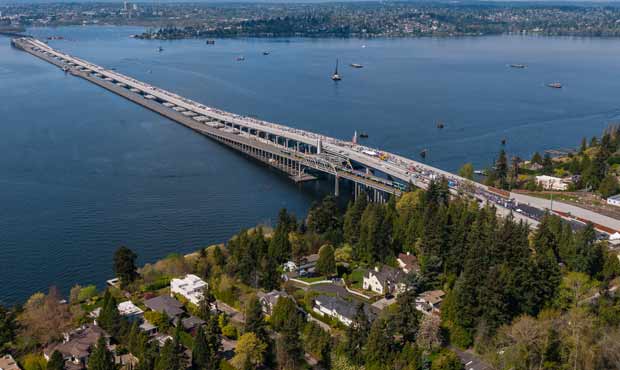Lingering questions about new 520 bridge answered
Apr 26, 2016, 9:29 AM | Updated: 10:53 am

A federal agency found the new 520 Bridge to be "structurally deficient." (WSDOT)
(WSDOT)
Now that the ribbons have been cut and drivers have had their first taste of the new 520 floating bridge, it’s time to tie up a few loose ends on the project.
First of all, why not leave the old floating bridge in place and use it for something?
“It’s certainly safe for today, but in the future, it really was reaching the end of its life,” Steve Peer with the Washington State Department of Transportation explained.
Related: Bertha shuts down Seattle’s viaduct for 2 weeks
But not even safe enough to put the pedestrian or bike path on it and put more lanes on the new bridge?
“The approaches on both sides are vulnerable to earthquakes,” Peer said. “They don’t have the same seismic standards that we have today. And we would hate to have anyone on a bridge that isn’t safe.”
The state is also getting a break on the removal because the contractor is going to sell the pontoons and recycle the old concrete. It’s also in the way of boat traffic.
The new bridge is also designed to support light rail.
“If we brought in some supplemental pontoons we could absolutely have a light rail going down the center,” Peer said.
There are some people on the Medina side of the new bridge that claim it is louder than the old bridge. It is higher, which means the sound could travel a little more, but Peer says the road was designed to be quieter. Tests are underway to determine just how loud it is.
“We are measuring to see, gosh, what is the difference between the old bridge and the new bridge and what can we do about it, if anything, in the future,” he said.
The pedestrian-bike path will not go across the entire bridge until the middle of next year. We have to wait for the Montlake connection to be completed before people will be able to go from Medina to the University of Washington. That path should open next month.












